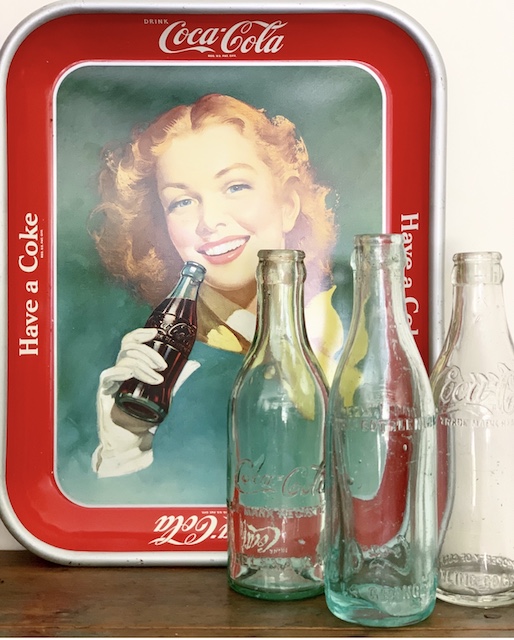
I am so excited to be sharing my fist ‘Pickin With Pops” blog post. If you follow along with me on instagram then you may have seen my dad’s segment in stories called Pickin with Pops. My dad is a true picker and really does enjoy learning the history behind the things that he brings home. For his first post, Dad is sharing his tips for dating old coca-cola bottles. Our hope is that this will serve as a bit of a reference for you while you are out ‘shopping’ or it may even help you to date some bottles that you already have! Now, let’s see what my dad has to say!
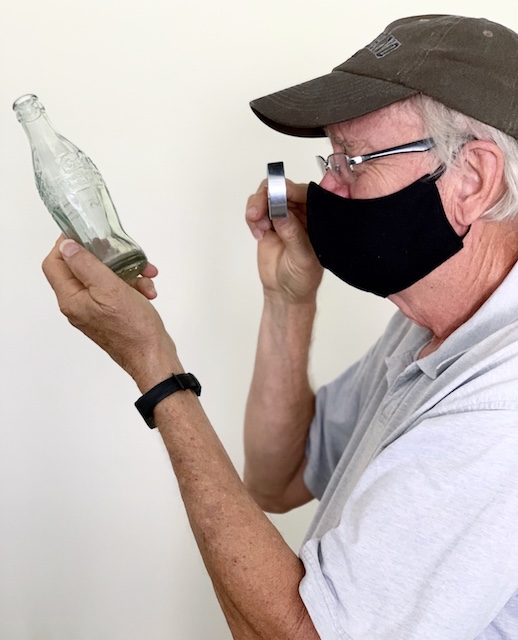
Have you ever found an old soda bottle and wondered just how old it really was? One aspect of collecting old bottles that I have always enjoyed is age-dating them. When it comes to dating older Coca-Cola bottles issued in the United States, there are several telltale features that I rely upon. First of these is bottle shape: Is the bottle contour shaped, straight sided, or the distinctive Hutchinson patent style? Once this determination has been made, there are a number of other features that can often reveal the manufacture year.
CONTOUR COKE BOTTLES
(c. 1916-date)
Coca-Cola bottles with a pinched waist are known as contour or “Hobbleskirt” bottles. All contour bottles have the familiar crown-top lip. (Bottle caps were once known as “crowns.”) Newer contour Coke bottles from the mid-1960s forward will normally have painted white labeling, as do some others from as early as 1957. The earliest of these will most often have small date marks (also known as date codes) embossed on the waist as two-digit numbers, followed closely by other number-letter-symbol combinations. For example, a bottle marked “74.22 © – 1” would have been manufactured in 1974. Numbers right of the date code, I believe, indicate the machine and/or mold used to make the bottle, and the letter or symbol in the middle represents the glass company that manufactured the bottle. During the 1980s Coca-Cola ended this practice of date-marking its bottles.
With few exceptions, contour Coca-Cola bottles manufactured before the mid-1960s are labeled entirely with embossed lettering. Thus, an embossed Coke bottle is almost always older than a painted-label one. Contour Coke bottles first appeared in about 1916, when blown-in-the-mold bottles were being replaced by early machine-made bottles. Contour Coke bottles with embossed lettering and no painted label will therefore date between 1916 and about 1965. Various distinguishing features may be identified on individual bottles to date with greater precision nearly all bottles from this 50-year period.
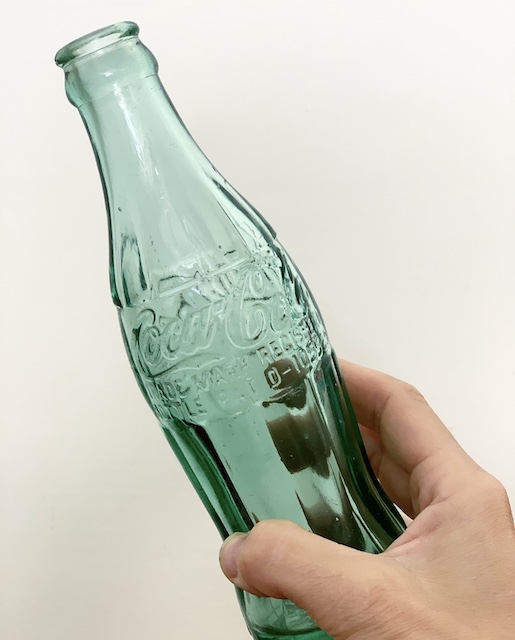
By observing the patent statement embossed just beneath the name “Coca-Cola” on the side of any contour Coke that is not a painted label bottle, one may quickly begin to date that bottle as being from one of the following five broad time periods.
· U.S. Pat. Office, 6-1/2 oz. (Embossed on Coke bottles issued 1958-1965.)
· U.S. Pat. Office, 6 oz. (Embossed on Coke bottles issued 1951-1958.)
· Pat. D-105529 (Embossed on Coke bottles issued 1938-1951.)
· Pat’d Dec. 25, 1923 (Embossed on Coke bottles issued 1928-1938.)
· Pat’d. Nov. 16, 1915 (Embossed on Coke bottles issued 1916-1928.)

Having made this determination, one should then look closely for a specific date mark elsewhere on the bottle. You may need a magnifying glass for this step. If a bottle is from one of the first three time periods listed above (1938-1965) there will likely be a small embossed date code found on the waist left or right of a letter or symbol. For instance, the number “42” on a bottle marked either “87 L 42” or “42 L 87” would denote a bottle made in 1942 during WWII. Remember, in this instance the number “87” cannot be the date mark since we know that without a painted label, the bottle in question was made prior to 1966. A quick glance back at the patent statement on the side of this bottle (which should read “Pat. D-105529”) should signify that this Coke bottle was indeed produced between 1938 and 1951.
In the case of contour Coke bottles from 1938 and earlier, some will have date marks, and some will not. Some date marks for bottles from the 1930s and late 1920s will appear as embossed two-digit numbers on the waist. In other instances, bottles from the 1930s, as well as some dating back to around 1916, will have date marks found as small two-digit numerals embossed on the heel (the smooth bottom rim at the base of the bottle). It is best to search for these date marks with a magnifying glass and good light as they are easily overlooked and, even when found, seldom easy to decipher.
When located on the heels of early contour Coke bottles, these tiny date marks will often be embossed together with letters identifying the name of the glass company that made the bottle. Thus, CHATT 26 indicates a bottle made in 1926 by the Chattanooga Glass Company, whereas ROOT 31 represents a bottle made in 1931 by the Root Glass Company, and LGW 23 signifies one manufactured in 1923 by Laurens Glass Works. Of the 22 Coke bottles in my collection that date from the period 1928 to 1938, 12 have date marks on the waist, 9 have date marks on the heel, and 1 has no visible date mark. Of the 25 Cokes I have from the period 1916 to 1928, none has a date mark on the waist, 21 have date marks on the heel, and 4 have no visible date mark.
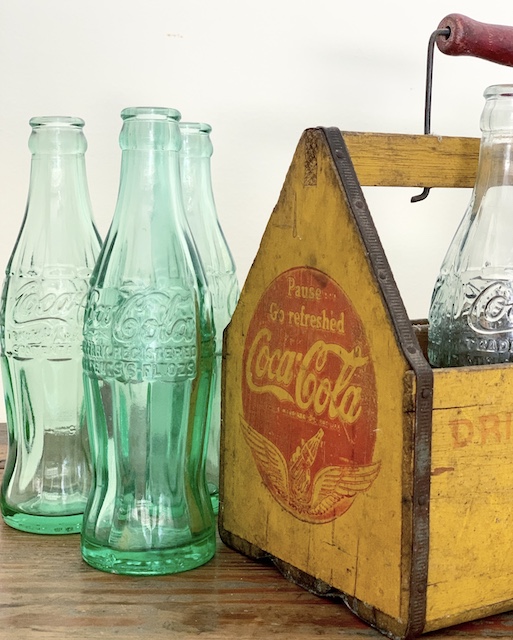
STRAIGHT SIDE COKE BOTTLES (c.1900-1920)
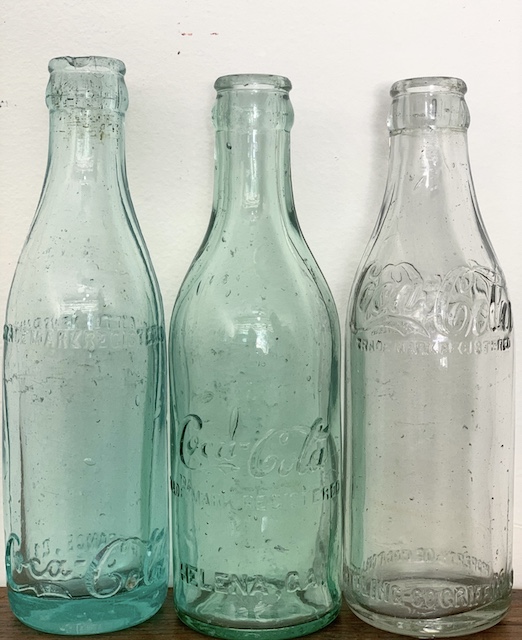
When it comes to dating straight side Coca-Cola bottles, all of which are from circa 1900 to 1920, the process is frequently more challenging, and the final determination often less certain. But first a few words about straight side Coke bottles. Prior to the advent of automatic bottle machines in the early 1900s, and before bottle-making technology allowed for the manufacture of contour shaped bottles, soft drink bottlers relied on cylinder shaped bottles made with straight sides in two-piece wooden molds. All of these were crown-top bottles.
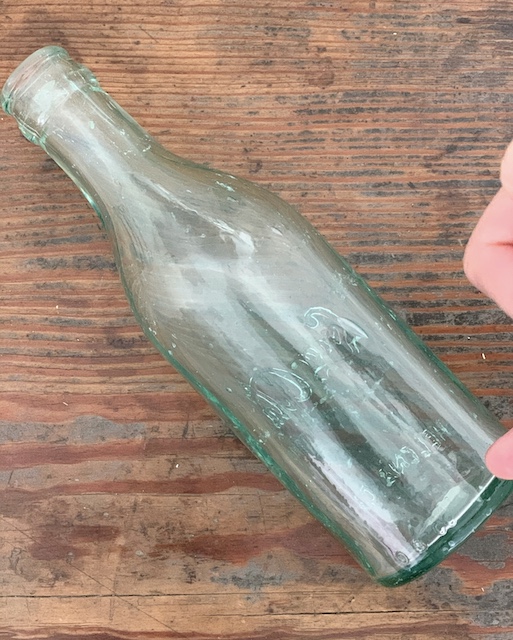
Initially these straight sided bottles, which often display seed bubbles in the glass, were made with separate tops “applied” under heat by a glass maker, one bottle at a time. Straight side bottles made with applied tops often exhibit visible stretch marks, evidence that the top was joined as a separate unit to the neck in the process of “finishing” the bottle. Also, the two seam lines that run from base to neck on these early straight-sides do not extend to the top since that uppermost part of the bottle was made and applied separately.
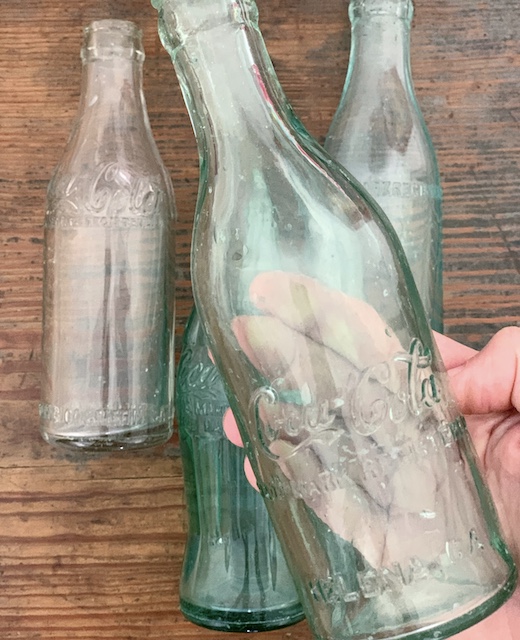
As bottle-makers improved their manufacturing processes, they soon learned to make complete bottles by machine, eliminating the need for applying the top of each bottle separately and by hand. Soon early automatic bottle machines were producing finished bottles much more rapidly, and these bottles may be distinguished from ones with applied tops by noticing that two mold lines run straight up the side of the bottle to the top of the lip.
As for dating straight side Coca-Cola bottles, lack of uniformity in bottle production throughout this era prevents consistent accuracy. In some cases, Coke straight-sides have date marks on the heel similar to those found on many contour Cokes from 1916 to 1938, as described above. Among the 42 straight side Coke bottles in my collection, 13 have date marks on the heel. In the absence of such markings, however, collectors are generally left to speculate as to a manufacture date with little reliable evidence to go on.
Some say the location of the name “Coca-Cola” in script on the bottle side is significant. Others rely somewhat on whether the top was applied by hand or machine. Yet by some reports, at least one bottle manufacturer, Laurens Glass Works of Laurens, SC, was still producing Coke bottles with hand-applied tops as late as 1919, long after others were making their bottles entirely by machine. Thus, many straight side Coca-Cola bottles cannot be dated with certainty, other than to say that they were all made between about 1900 and 1920.
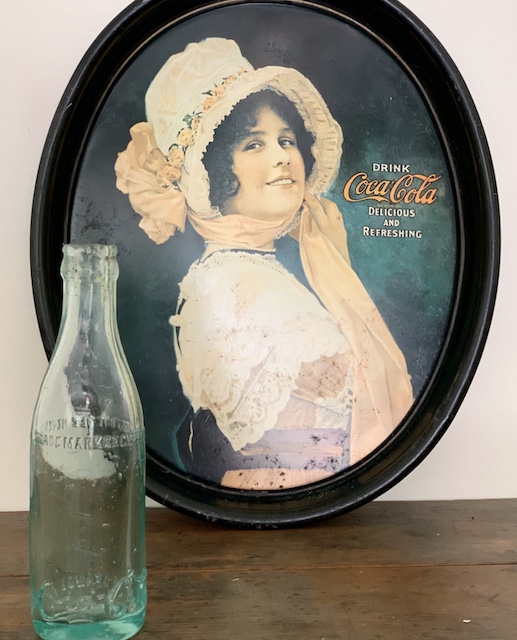
HUTCHINSON COKE BOTTLES
(c. 1890s-1907)
Slightly older, and far more rare, are Hutchinson-style Coca-Cola bottles. These are blown-in-mold, hand finished bottles featuring straight sides, high shoulders, and the patented Hutchinson-style closure. These bottles, when embossed with Coca-Cola labeling, are so scarce that I have never seen an original one. (Beware of reproductions!) Nor do I know whether any of these can be dated, other than perhaps in the case of “Hutch” Coke bottles with town or bottling company names embossed on them.
By researching the history of the first Coca-Cola bottler in the town named on one of these earliest Cokes, one might be able to date the bottle, more or less, by determining the start date of operation for that town’s first Coca-Cola bottling plant. These Hutchinson-style soda bottles would have been issued, after all, by the first ever Coca-Cola bottling and distribution sellers, which began operation in the middle to late 1890s in places like Birmingham, AL and, some have reported, Chattanooga, TN, when Coca-Cola was first being sold in bottles to a few local segments of the American public
THANKS POPS
Thanks to my dad for sharing his tips on dating old coca-cola bottles. I must admit, I had NO clue how to date these old coke bottles until now. Moving forward, when I find an old coca-cola bottle, I will feel better equipped to determine if it’s old and if it’s worth something. Remember, you can always reference this page too when you are out and about to help you determine the age of any bottle that you may find. Happy hunting to each of you!
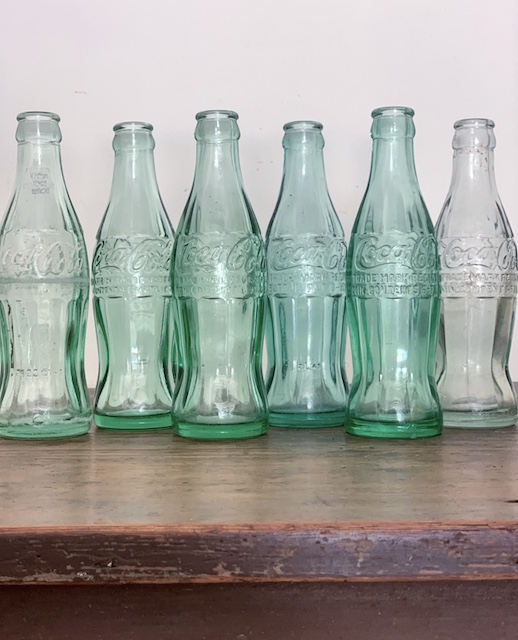
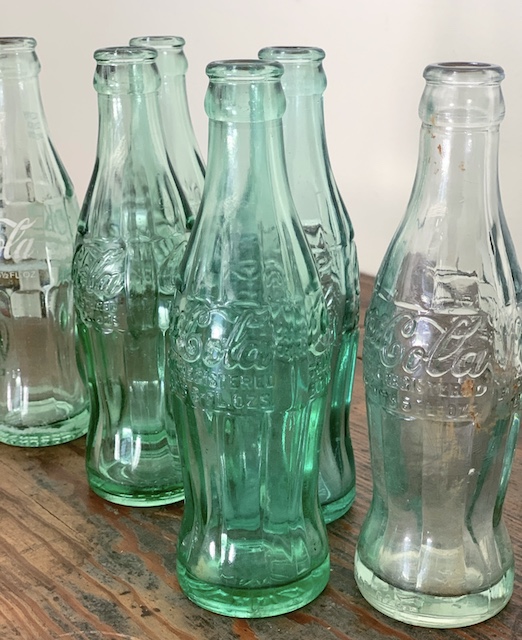
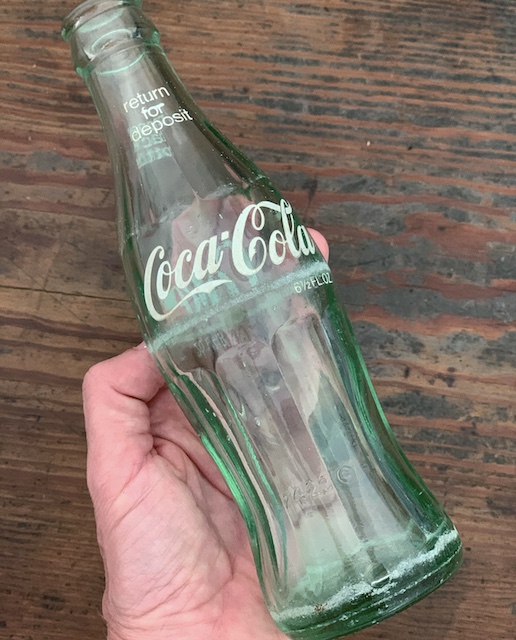
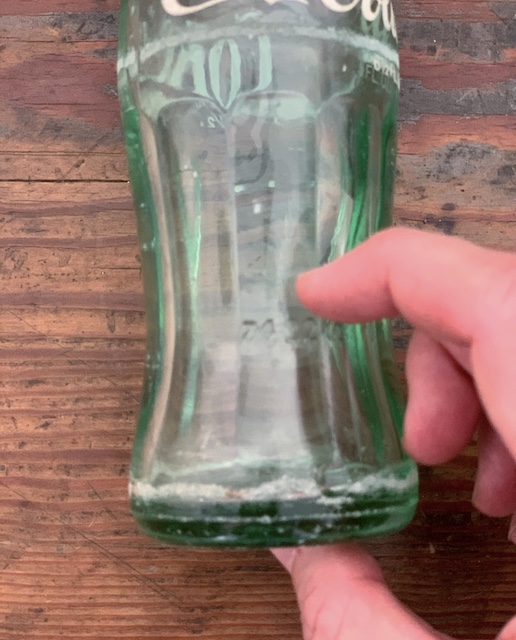
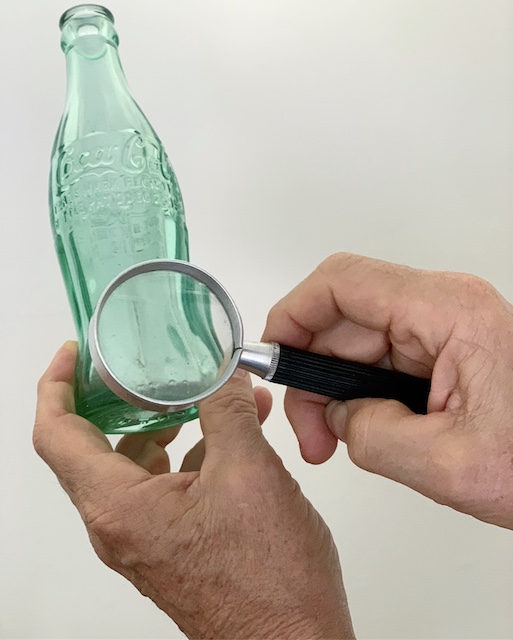
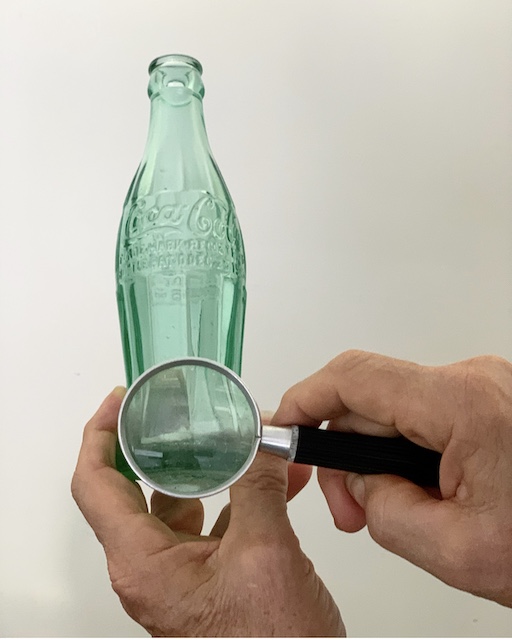
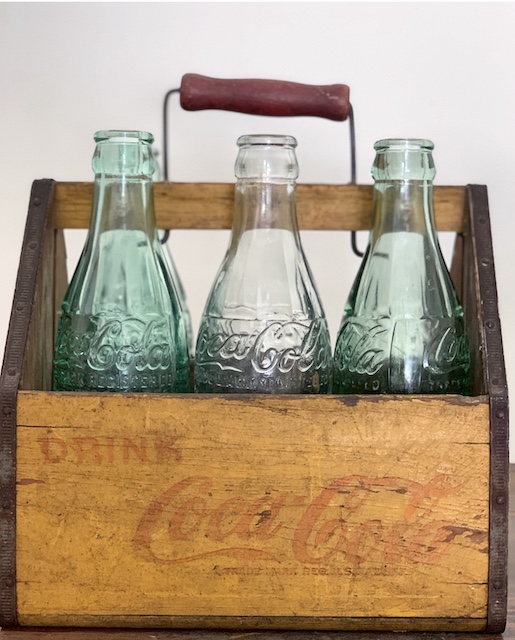
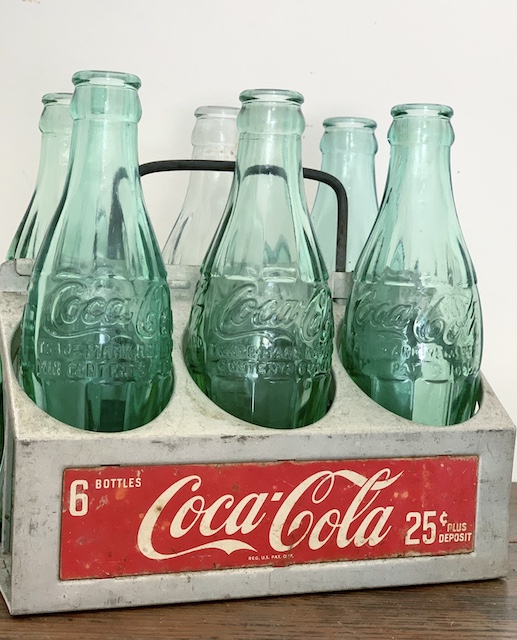
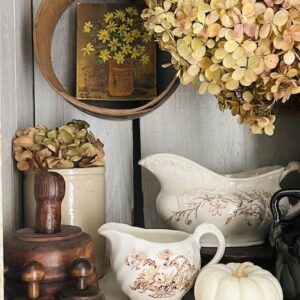 Dried Hydrangeas In the Cupboard
Dried Hydrangeas In the Cupboard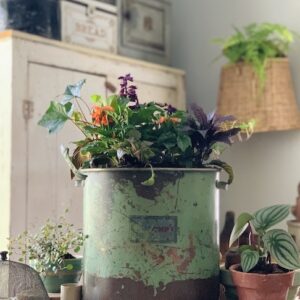 Vintage Container Garden
Vintage Container Garden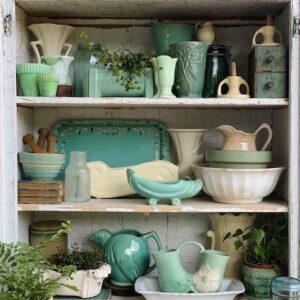 Vintage Planter Collection: A Turquoise Vignette
Vintage Planter Collection: A Turquoise Vignette Spring Vignette: In 5 Easy Steps
Spring Vignette: In 5 Easy Steps

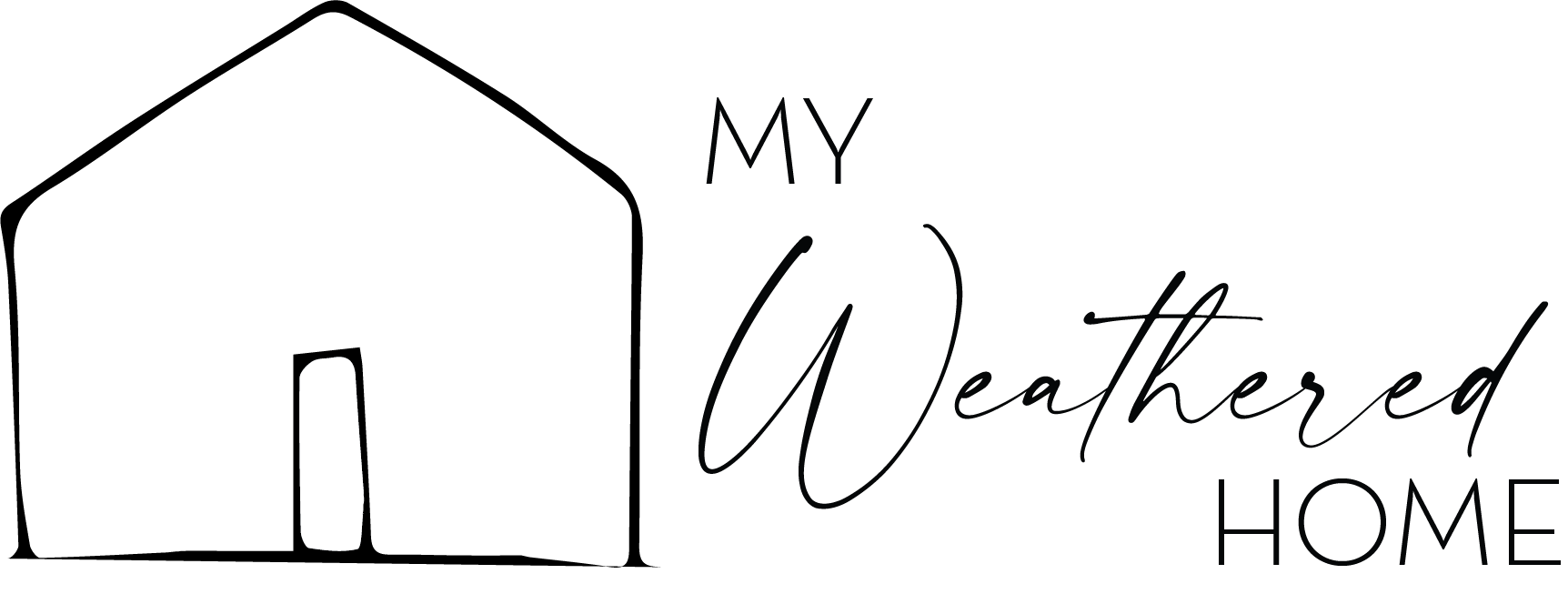
Your co-author is the REAL treasure. ❤️.
Very helpful information. Thanks. I went and got my 4 old Coke bottles and was able to date them, thanks to this info. I bought them because of them being marked Vallejo, Ca. My 85 yr old mother used to work for Coca-Cola in Vallejo in the 1950s. 🙂
Love seeing and reading your Pickin’ with Pops!!! Your Dad is such a sweet man and so knowledgeable about his finds!!! Enjoy learning the history of the pieces y’all buy!
Such great Coca Cola bottle information. I am definitely saving this for future reference. Thank you Emily and Pops!
Love all you’re stories with you’re Pop and now we have information that we can go back to when needed.
Thank him for us.
Now I am on the hunt for some old Coke bottles! Thanks for equipping me with this info.
Love this post! Have enjoyed watching you and your Dad together on IG for a whole now. He’s the cuuuutest and you are so lucky to enjoy these moments together. I love seeing you make the memories!
God Bless to you and your sweet Pops!
Shelly Bartz